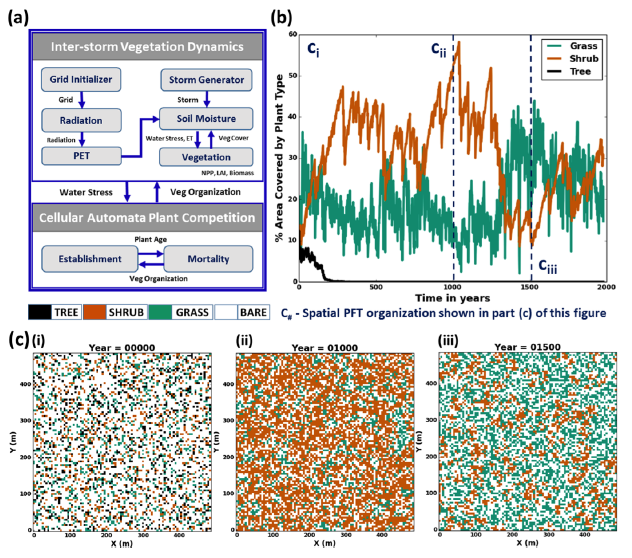Vegetation organization in a semiarid ecosystem in central New Mexico
Semiarid and desert ecosystems are characterized by patchy and dynamic vegetation. We implemented the Cellular Automaton Tree Grass Simulator CATGraSS [Zhou et al., 2013], an ecohydrologic cellular automaton model, in Landlab. The model couples local vegetation dynamics (that simulate biomass production based on local soil moisture and evapotranspiration) and plant establishment and mortality based on competition for resources and space. This model is driven by elevation dependent rainfall pulses and solar radiation. An example of CATGraSS model application in Landlab is presented in the figure below: (a) CATGraSS model flow chart showing flow between different model components; (b) time series of modeled grass, shrub, and tree cover fractions for CATGraSS implementation on a flat domain for central New Mexico climatology. (c) Spatial distributions of plants in model: (i) initial condition, (ii) after 1,000 years, and (iii) year 1,500. Model shows epochs of shrub and grass dominance in the modeled domain, while trees were outcompeted.
This figure is from Hobley et al. 2017.
*PFT - Plant Functional Type (Tree, Shrub, or Grass)

